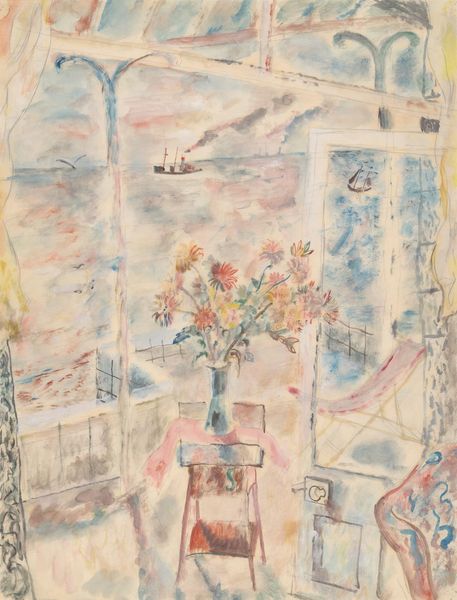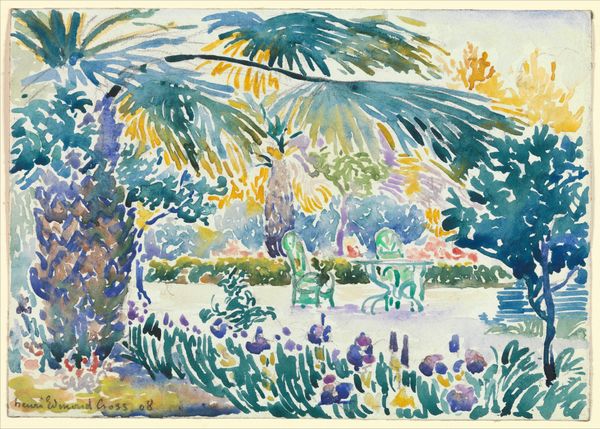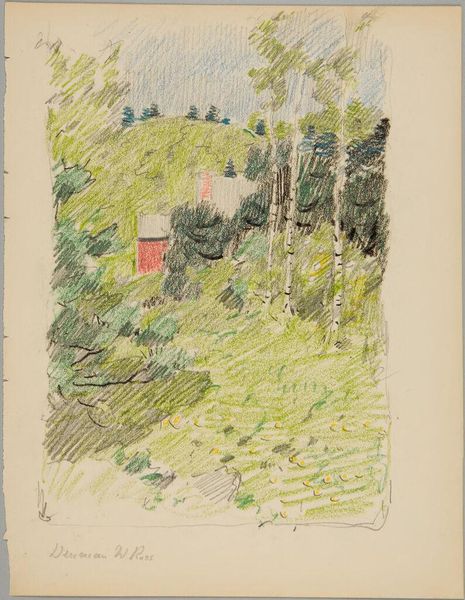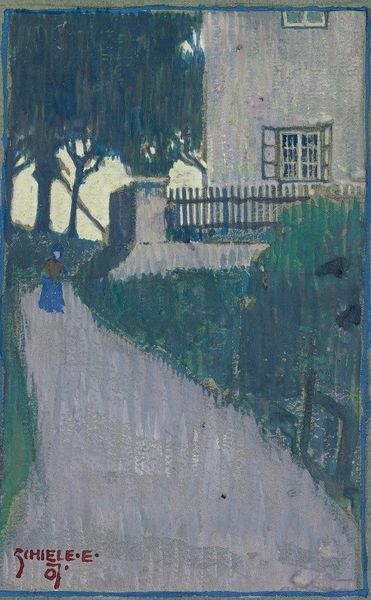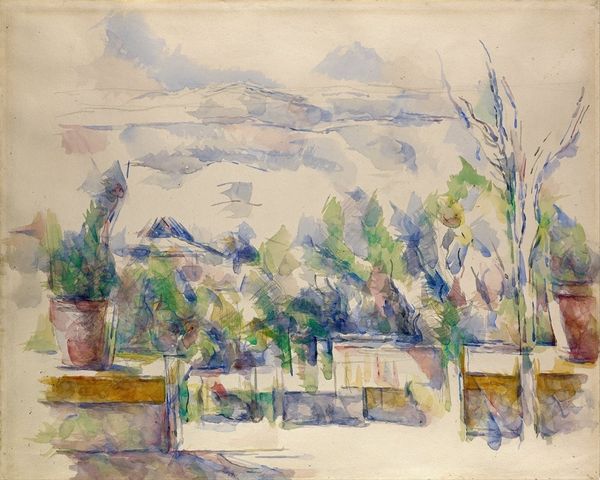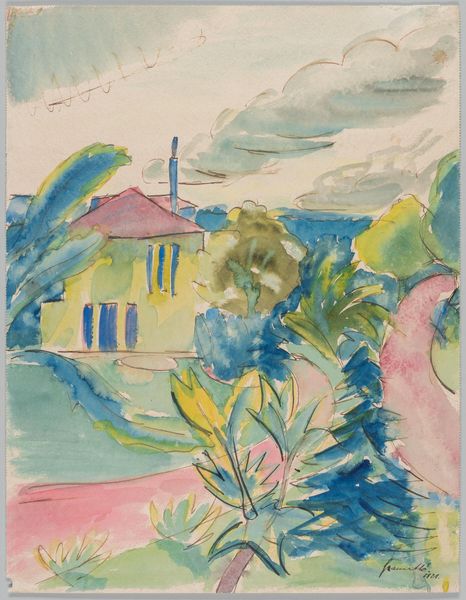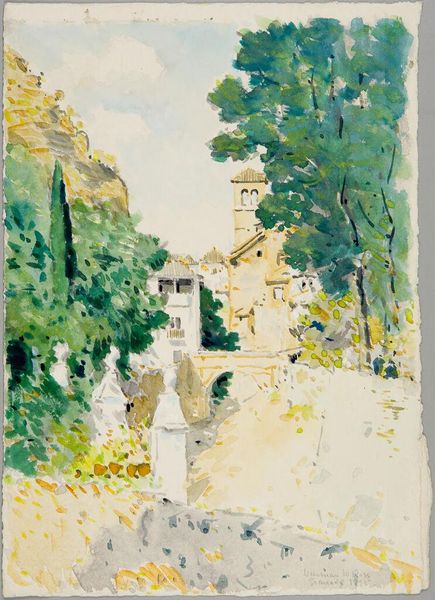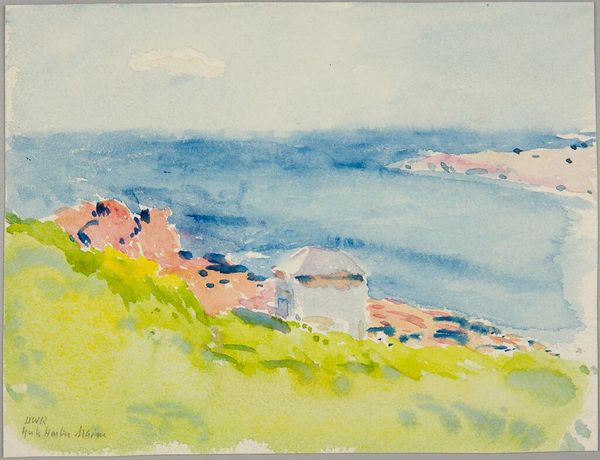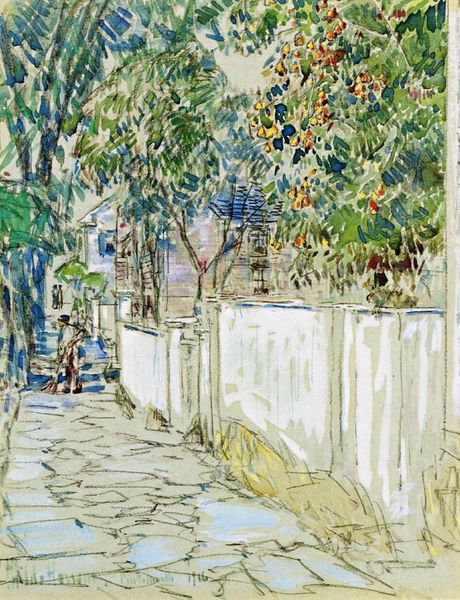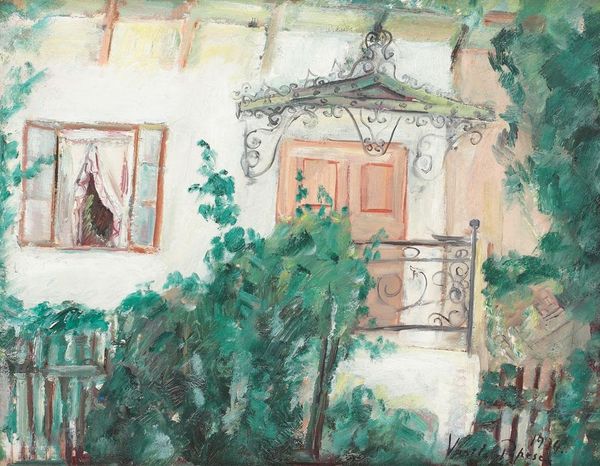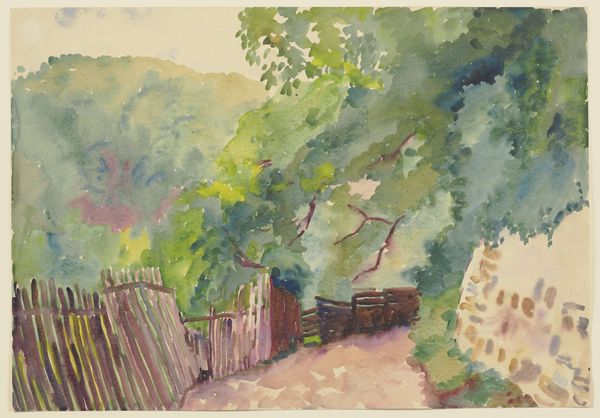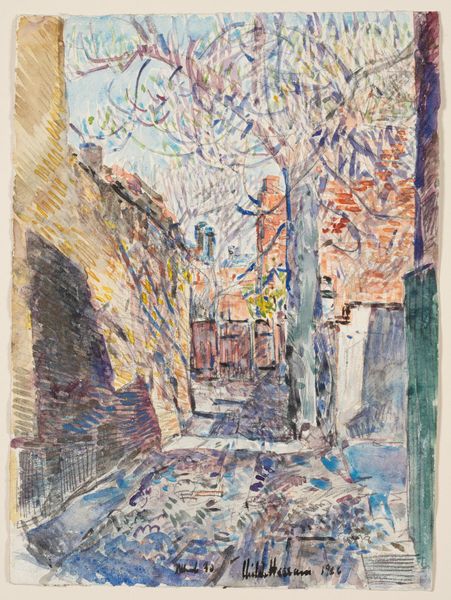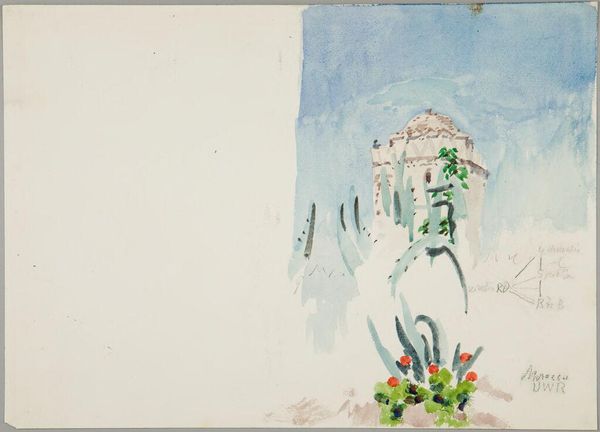
Dimensions: 135 mm (height) x 196 mm (width) (plademål)
This landscape with a bastion, tower, and chapel was etched by Jan van de Velde the Younger, sometime before his death in 1641. It’s an engraving, meaning that the artist would have used a sharp tool called a burin to manually carve lines into a copper plate, which would then be inked and printed. Look closely, and you can see how the composition is constructed entirely from these incised lines, closely packed together to create shading and texture, more widely spaced to suggest light. Think of the sheer labor involved in the production of this image, one careful cut at a time. It speaks to a pre-industrial world, where skilled handwork was the engine of visual culture. Yet, prints like this one also represent a step toward mass production, anticipating our own world of endless mechanical reproduction. Van de Velde was not only an artist but also an entrepreneur, making images for a growing market of collectors. So, this isn't just a picture; it's a commodity, a sign of things to come.
Comments
No comments
Be the first to comment and join the conversation on the ultimate creative platform.
